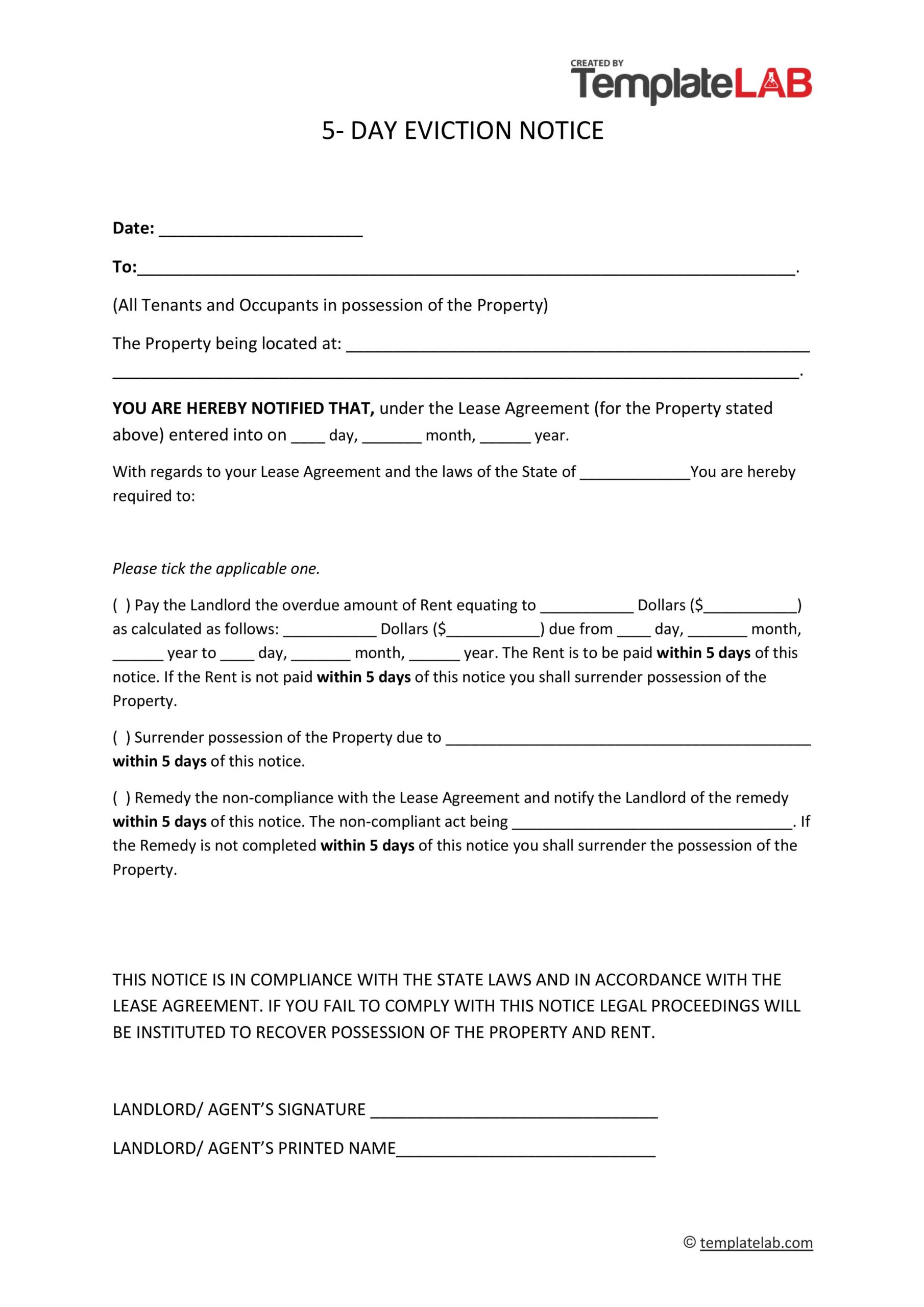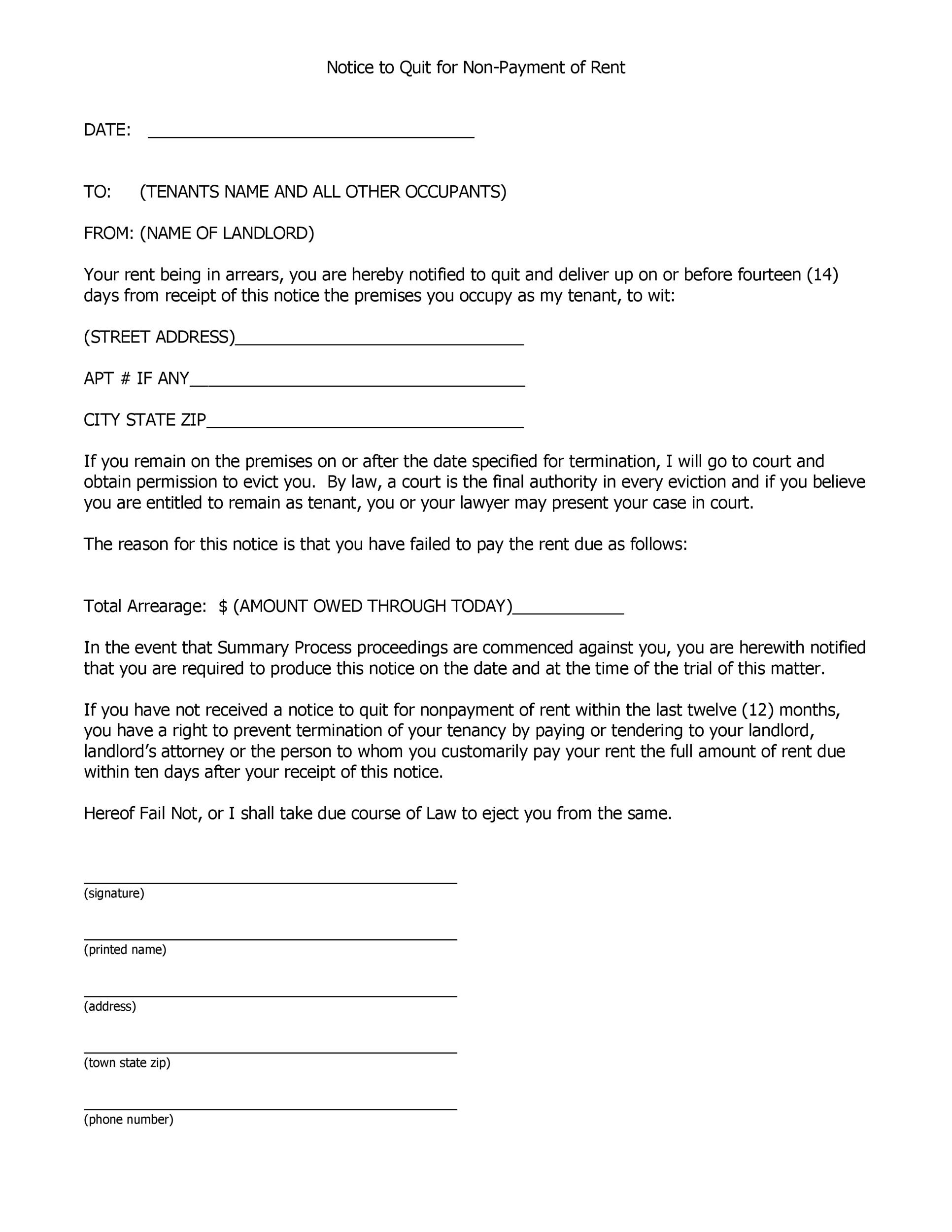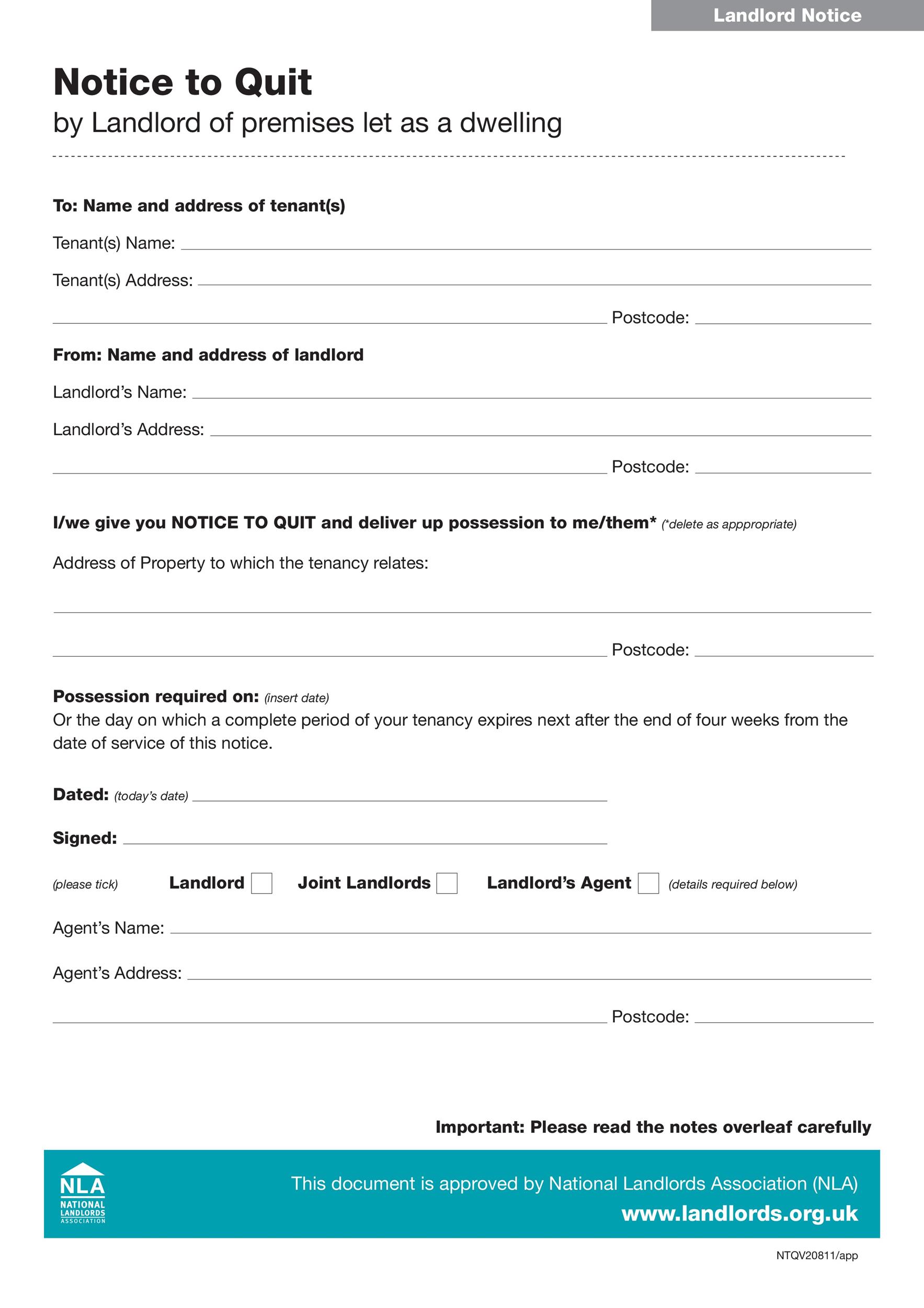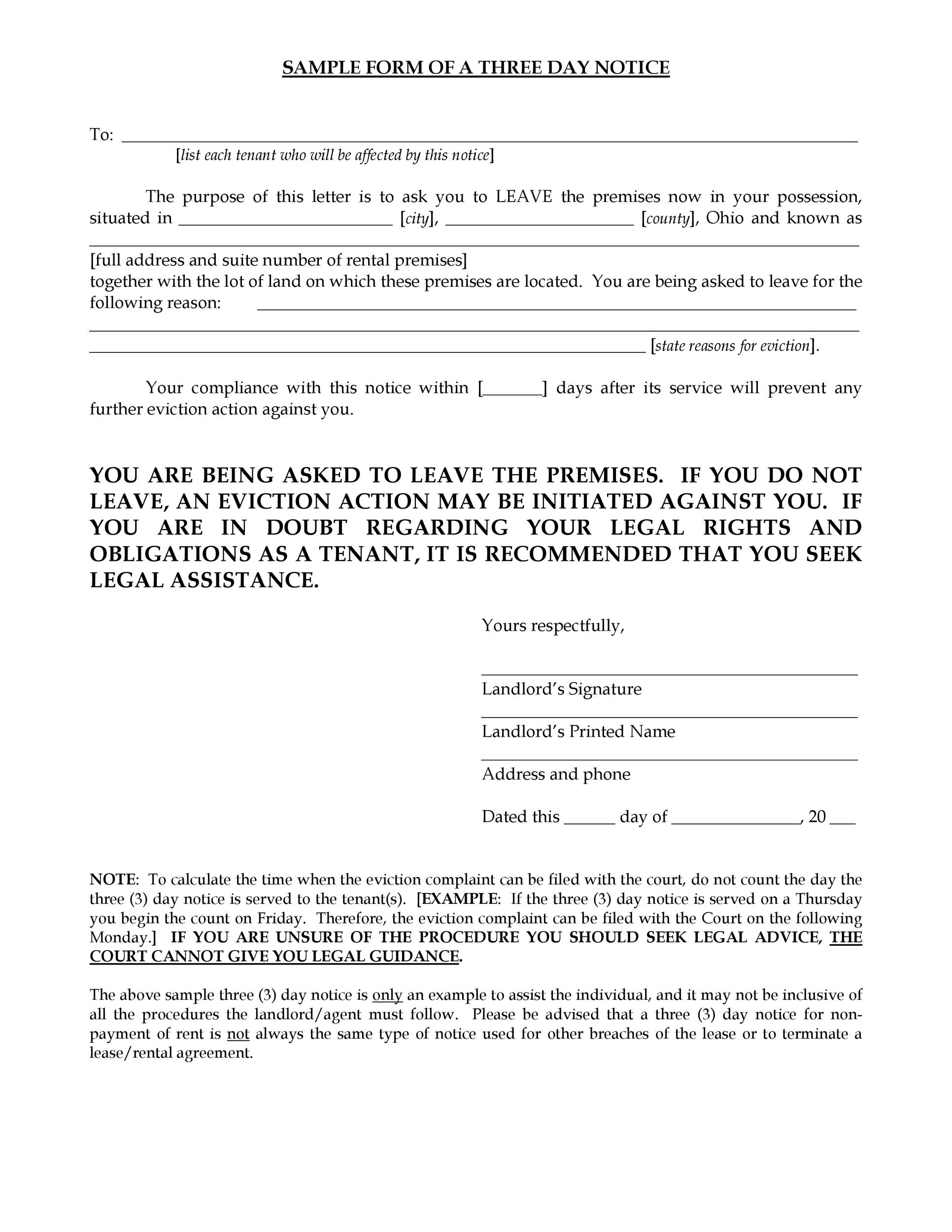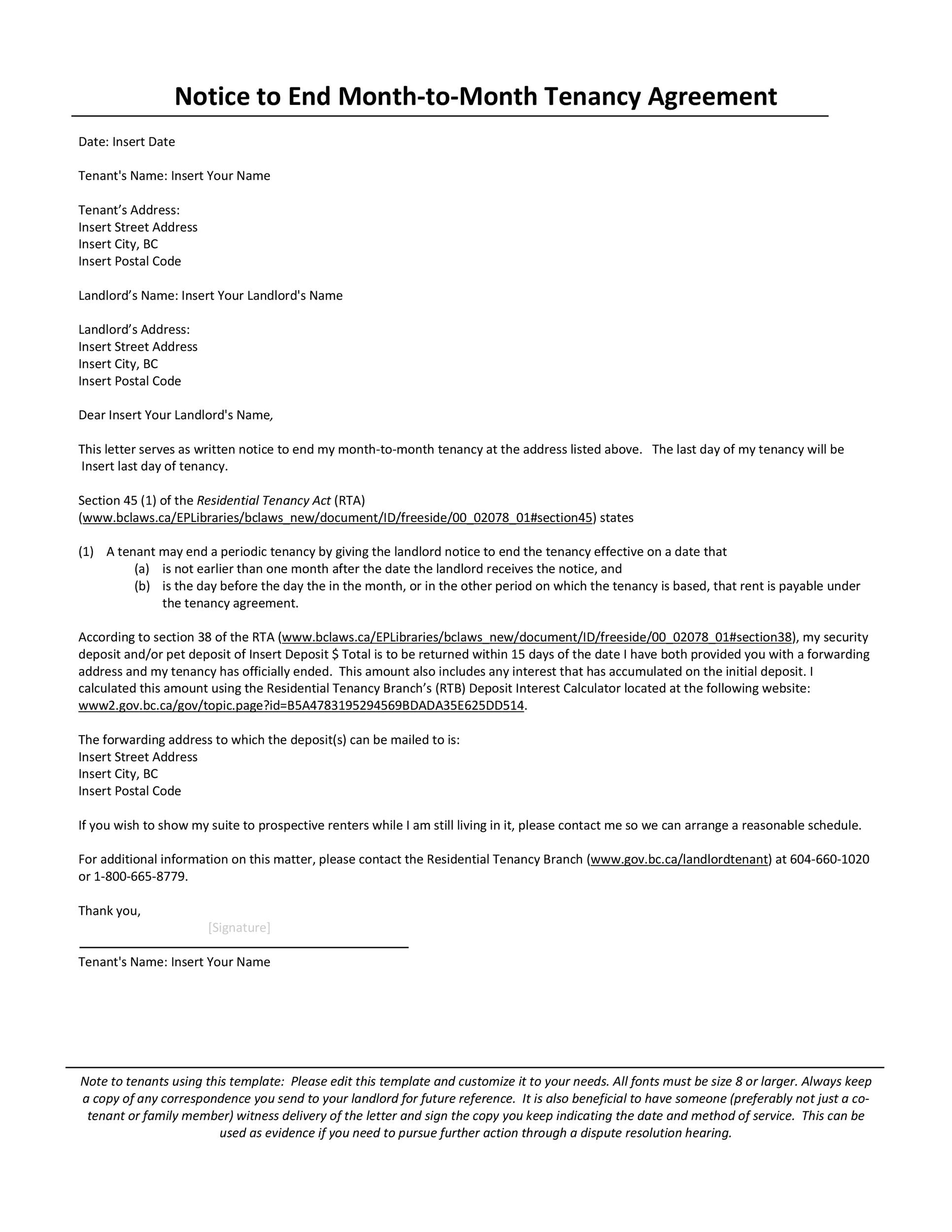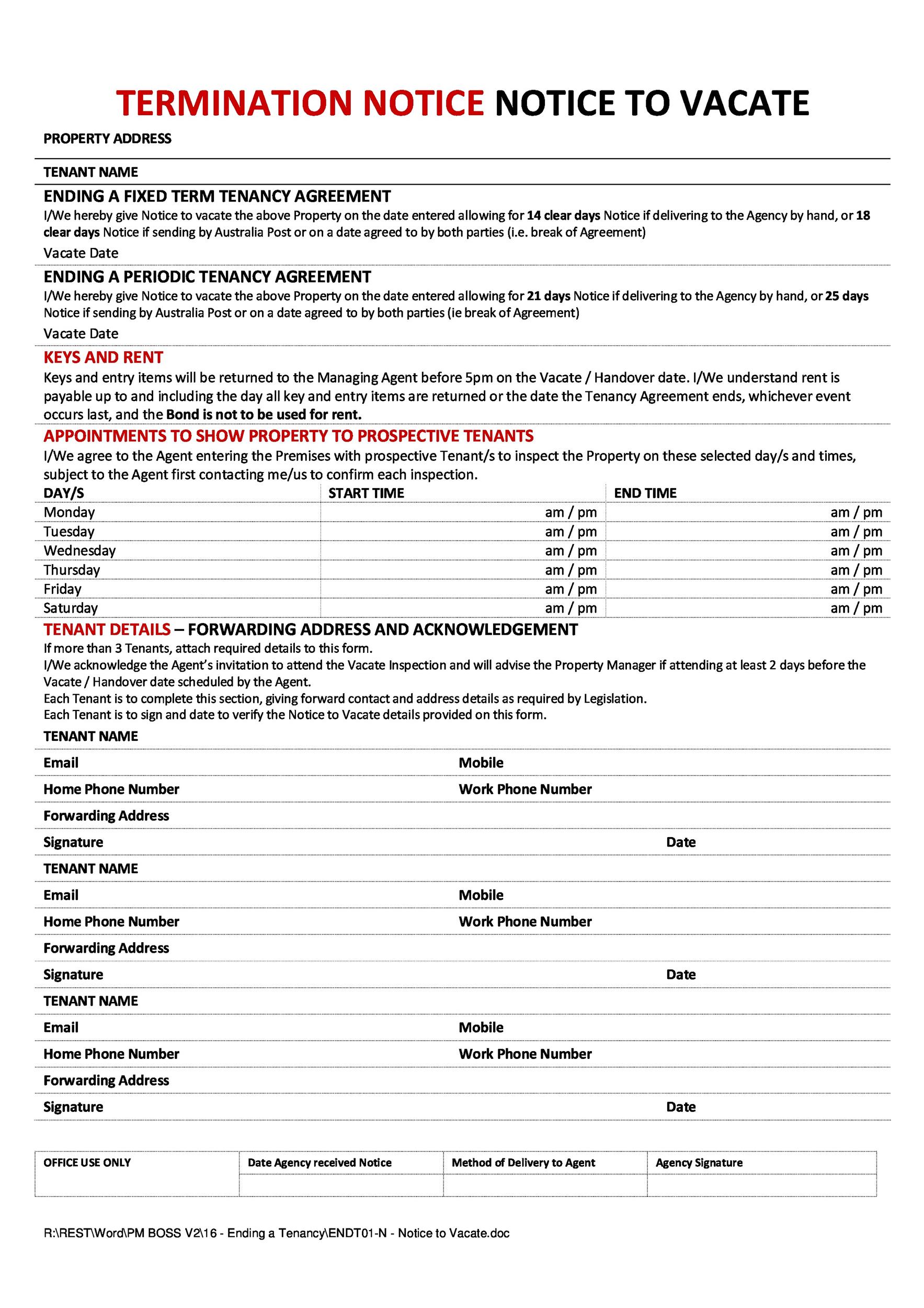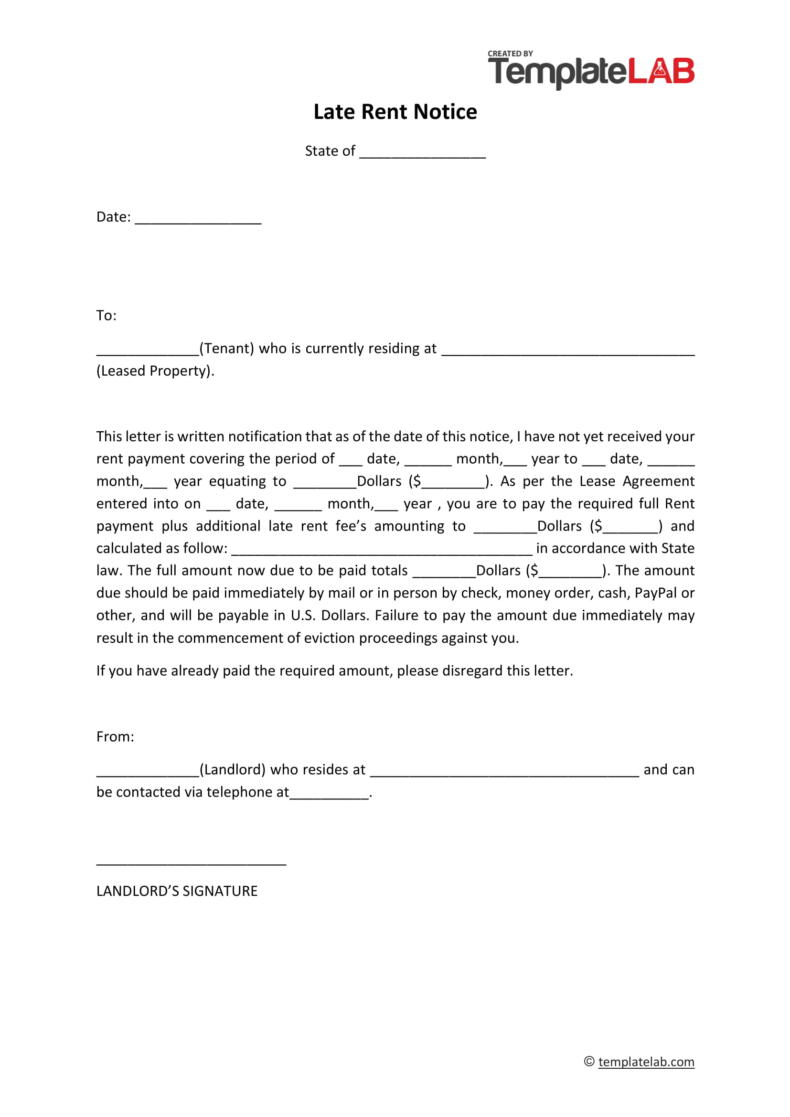When writing an eviction notice template, there are some important things that you need to keep in mind. While eviction letter template examples or printable eviction notices might offer you some guidance, this is a very important document that must be properly constructed to be enforceable. You will find that most free eviction templates or eviction letters to tenants are too general for your purposes. This is why you need to be sure that you know more about the process of creating this document.Evictions can be tense and frustrating for property owners, and you do not want to end up in worse shape legally than you thought you would be if the tenant does not want to leave. Your eviction notice will help to make the process of removing someone from your rental or commercial property much easier.
Table of Contents
- 1 Eviction Notice Templates
- 2 Eviction Notices By State
- 3 What does an eviction notice look like
- 4 Eviction Letter Templates
- 5 Different kinds of eviction notices
- 6 Types of Eviction Notices:
- 7 How to write an eviction notice
- 8 The Lease Termination Letter Templates
- 9 How to file an eviction notice
- 10 How to avoid trouble with evictions
- 11 Eviction Notices Are Key to Operating Rental Properties
Eviction Notice Templates
Eviction Notices By State
What does an eviction notice look like
An eviction notice is used by landlords to tell tenants that they must move out or that they must address a specific issue with the penalty of being forced to move out if they do not resolve the issue. There are many ways that this kind of document can be used to help to create change in the way that the tenant is behaving or managing a property, but it can also be used to simply ask someone to leave the premises with a due warning.
The eviction notice process requires that the tenant be given fair notice per the rules of each state. The timing might be a few days after the notice, or it could be two weeks. There are many variables that can impact the amount of notice that the tenant will have before the eviction will be considered enforceable. This kind of notice is used most often in cases where the rent has not been paid, but there are other common reasons for asking a tenant to leave a property:
- The property is going to be sold
- The tenant has violated neighborhood regulations
- The tenant has caused noise violations
- The tenant has broken other laws
- The tenant has not paid the rent
- The tenant has not cared for the property as laid out in the rental contract
- The tenant has caused altercations or other problems with neighbors
- The tenant has sublet the location without providing notice to the landlord
- The property has been condemned for some reason
These are just a few of the reasons that a tenant might be asked to remove from a property. You can lay out any number of requirements in your rental contract with someone, and if they do not follow these guidelines in the signed rental contract, it can lead to the need to send out an eviction notice.
Eviction Letter Templates
Different kinds of eviction notices
First of all, you need to know the difference between tenant at will and tenant at sufferance. These are different situations within the eviction process, and you will need to be sure that you are aware of their implications before you evict someone.
- Tenant At Will. In the tenant-at-will eviction, landlord permission is given for the tenant to leave the premises, and the lease is broken. This is almost always in the case of month-to-month leases, as longer-term leases are more complex to end. This might happen if there is no rent money being paid and the renter is aware that they can no longer afford the property. This might allow the tenant a longer grace period since they have agreed to remove from the property and are trying to actively find a new place to go to. The rules for this kind of timeline can vary per state.
- Tenant At Sufferance. In this kind of eviction, the tenant refuses to leave the property, and the landlord has not given permission for them to do so in the first place. This might be when the tenant wants to leave and chooses to just stop paying rent to try and break a long-term lease, or it can be when a notice to quit has been sent out and not responded to. The timeline for removal from the property will be shorter in these situations, but again the rules for this eviction process vary from state to state.
Types of Eviction Notices:
- Failure to Pay Rent. This is the most common of the eviction notices that landlords must use, and it is often used with a three-to-five-day notice to quit for non-payment. Each state has a different list of requirements that must be met before a failure to pay rent notice can be sent. There will need to be a specific number of missed rent payments, and the landlord will have had to reach out in various ways to try and secure payment before the notice to quit can be served.
- Lease Violations (Cure or Quit). This is a notice that is served when the renter has done something like parked a car on the grass, removed the siding from the home, or some other form of violation that is not allowed per the rental contract. This item or infraction must be remedied within a specific amount of time or the person will be evicted. States vary greatly on the way that this kind of notice is enacted and enforced, so be sure that you look at the rules for this action in your state carefully.
- Unconditional Quit Notice (ends month-to-month lease). In this kind of notice, the tenant has not paid rent on time, or they have violated the lease agreement sufficient to end the lease. This will usually require that a 30-day eviction notice be served to the tenant. Some states require a 60-day notice. Be sure that you check on the requirements for the amount of notice that must be given so that you do not run into issues with ending the lease in this way.
How to write an eviction notice
This document needs to be written properly to be used to evict someone. An incorrectly written eviction notice cannot be used to evict someone since it will not be enforceable.
- Tenant Name and Address. The full legal name of the tenant must be entered at the top of the notice, as well as their current address. You might also want to include the contact information that you have on the rental contract.
- Landlord Name and Address. The full legal name of the landlord or the rental company and the address and contact information for this person or entity needs to be entered on the document next. As with all other legal documents, this information must not include nicknames or shorthand of any kind.
- Reason for the Eviction. This might be any of the above reasons, from failure to pay rent to lease violations to month-to-month contract breaking. You will need to be clear about the reason for the eviction, and you cannot name something that is not called out by law, or that is not laid out in the leasing agreement that you signed with your tenant. For example, if you did not forbid pets to be in residence at the location, you cannot evict someone for having a pet.
- Location of Eviction. This will be the actual address of the property or rental. The room or apartment number will need to be included as well.
- Remedy Information. If you are asking for a remedy to be done prior to eviction, you need to be clear about the language that is in the leasing document that the tenant signed when you state the nature of the violation. You will also need to indicate what the timeframe is for the remedy of the issue in this section. The lease might lay out this kind of information already, so you could reference the section of the lease that states these requirements if the tenant has access to this information already.
- Signature and Date. Sign the eviction notice and date it. You will also need to make a copy of this document so that you can post it on the door and one that you can send to the court to file your eviction. Do not give the original document to the renter or it might become lost.
The Lease Termination Letter Templates
How to file an eviction notice
These notices must be filed with the local county court, but there are different processes that must be followed for each county. You will need to check with your local county by going to their website and seeing what they require for reporting eviction notices. These notices usually must be sent to the tenant via certified mail as well, and they should be posted on the door of the property if the tenant refuses to answer the door to accept the notice or is not home. All of these efforts must be undertaken by the owner of the property to serve an eviction notice properly and to be able to enforce it.
Be sure that you pay any fees for filing the eviction notice as well so that your eviction can be enforced and completed. This is a common area of confusion for landlords, and you do not want to miss this step if you are preparing to have the sheriff come help you to remove someone from the property that you own. The filing requirements per your county or state might be really simple, or they could be more complex. Be sure that you look into all the details for this kind of order to be served and enforced so that you can use your eviction notice to actually begin the process of evicting someone.
How to avoid trouble with evictions
If you are a landlord, you know just how frustrating evictions can be. There are some ways that you can avoid common stresses to do with the eviction process, however.
- Use a Rental Contract. This is critical. Handshake deals cannot be enforced with an eviction notice, so this is never a good idea.
- Confirm Renter Status. Make sure that you run a background check on every renter as well as a credit check. This verifies their ability to pay and reveals information about their criminal history and other problems that could lead to them needing to be evicted.
- Use the Right Documents for Other Issues. Sometimes other problems will crop up that require that you have the right documentation on hand. This might be a late rent notice, a notice of lease violation, or a notice of rent increase. You cannot just make changes to the rental agreement without following the proper notice protocols and without the proper paperwork.
Eviction Notices Are Key to Operating Rental Properties
If you have been running into issues with tenant behavior, rent collection, or maintenance of your rental property, you will need to have the right documentation on file to handle an eviction if it becomes necessary. There are many reasons that you might have to warn a tenant of an upcoming eviction as well, so you should not limit yourself to the use of only one kind of eviction notice for unique situations. You might want to be sure that you have the correct language in each of the eviction notices that you are drafting so that you allow your tenant time to correct issues and to make things right, like payment of back rent.
There are many rules and regulations about tenant eviction that vary from state to state as well. Be sure that you are aware of these limitations and that you use your eviction notices correctly for the guidelines that have to be followed in your area.






